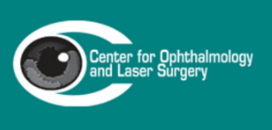Introduction to Glaucoma
Common Forms of Glaucoma
Primary Open-Angle Glaucoma
Primary open angle glaucoma (POAG) occurs mainly in the over 50 age group, and it’s the most common form of glaucoma in the US. There are no obvious symptoms of POAG, and because of that it often goes unnoticed. POAG occurs when the eye’s drainage angle is open, but fluid is unable to drain adequately. The problem is usually the result of a blockage deep within the drainage canal. If left untreated, POAG can result in vision loss. However when it is detected early, it can be corrected using SLT laser surgery and topical medication.
Narrow-Angle Glaucoma
Narrow-angle glaucoma or angle-closure glaucoma is a less common form of the condition. Symptoms of the disorder include eye pain, headaches, nausea, and blurred vision. It differs from open-angle glaucoma, in that the angle between the cornea and iris is very narrow, and this reduces the fluid space at the front of the eye. In addition, the iris is not as wide as it should be, so the extreme edge of it often forms a cluster over the drainage canal if the pupil dilates rapidly. The drainage canals are also blocked, and this pushes up the eye pressure very quickly. Treatment for narrow-angle glaucoma involves the surgical removal of a portion of the outer iris. This is done in order to clear the drainage canal, allowing excess fluid to drain.
Normal Tension Glaucoma
Normal tension glaucoma (NTG) or normal pressure glaucoma is the result of damage to the optic nerve, although the eye pressure is relatively normal. It is not clear what contributes to optic nerve damage in people that have near normal eye pressure. People with a family history of this type of glaucoma are at risk for the disease, as are:
• people of Japanese ancestry
• people with a history of systemic heart disease such as irregular heart rhythm
Although the causes of NTG are still unknown, the condition is treated in similar fashion to the other forms of glaucoma. Researchers continue to examine how optic nerve damage develops in glaucoma, and new treatments continue to evolve that improve the prognosis for all patients.
Talk to Dr. Loeffler to learn more. We’re located in Lighthouse Pt. and we serve the Pompano Beach, Deerfield Beach, Boca Raton & Ft. Lauderdale areas. Call us at (954) 786-5353.

